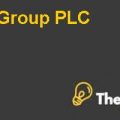
ANALYSIS OF THE CASE
The Objective of the authors of this case was to examine and analyze the perspectives of both the certified public accountant and the chief financial officers regarding the rules based accounting system and principles based accounting system. This examination was based on certain attributes. These attributes included:
RELEVANT
This attribute is meant to determine that how much relevantly the financial statements of the company have been prepared. If the financial statements have been prepared and are relevant they are going to meet the needs of the users and help the user understand the exact situation of the organization.
RELIABLE
Reliability of the information presented by the financial statements shows how much faithfully the financial statements have been prepared and whether management discretion is present or not. Reliable information is also verifiable and it must be verifiable in order to be reliable. This means if there is validity present and management is neutral than the information will be reliable.
TIMELINESS
This attribute basically means that reliable and relevant information is available to the decision makers as soon as they require so that they make their decisions and fulfill their decision making needs on time. Financial information that is presented to the users on time becomes relevant for them. If the investors base their decisions on outdated information then it might not be in the best interests of the company and themselves too.
VERIFIABLE
The financial statement information is said to be verifiable if the results of the financial statements could be obtained by any other methods. It also means that the information within the financial statements can be validated which will also make it reliable.
FAITHFUL REPRESENTATION
Faithful representation is achieved if the financial statements provide information that presents all the events and transactions that have occurred in that relevant period. This means that the financial statements of the company reflect the economic reality of the transactions.
NEUTRAL DEPICTION
This attribute relates to the fact that management should be neutral when preparing the financial statements of the company. The management should not be biased and they must not prepare financial statements which meet their personal interests.
COMPARABILITY
Comparability is one of the important considerations of the users of the financial information. This makes the surety that the items presented within the financial statements are consistent from one period to another. This gives the users ease in interpreting the financial statements by comparing it with the prior period financial statements
CONSISTENCY
This concept makes sure that there is consistency in the accounting information presented. Consistency is achieved if the same accounting treatment is followed in each period. This ensures that similar transactions should be treated in the same way every time to remove room for ambiguity.
UNDERSTANDIBILITY
Understandability is the strength of the financial information that it would be understandable to the users that are using the financial information, who are aware about the background of the company and also by its economic activities.
PROFESSIONAL JUDGEMENT
Professional judgment is the auditor’s ability to evaluate the financial statements that whether the financial statements have been prepared fairly and whether they represent the true economic substance of the transactions rather than their merely legal form. The auditors use skepticism and professional judgment to form opinions over the true and fair view of the financial statements.
COST
Cost is simply the cost incurred in the preparation of the financial statements. If the financial statements are prepared with least minimal costs than they are said to be cost-effective.
RESEARCH INSTRUMENT
The research instrument used for this study was the questionnaire. The questionnaire included the definition of each of the attributes and asked two questions regarding each attribute. The first question was related to a principle based approach and the second to a rules based approach for each of the 11 attributes. The respondents were required to tick mark in a box on a scale of strongly disagree to strongly agree ranging from 1 to 7. Point 4 was the neutral point which meant that the concerned qualitative characteristic could be achieved by either of the approaches.
SAMPLE SELECTION
Random sampling technique was used to select the sample from the entire population of certified public accountants and chief financial officers. The authors had selected a random sample of 500 auditors. These practicing auditors were selected from the AICPA. Out of the firms from which these public accountants were randomly chosen, 31 were largest accounting firms. Apart from that 500 chief financial officers were also chosen from Fortune 1000 and the questionnaire was also sent to them. The main characteristic of all of these respondents was that they were chosen from large organizations................................
This is just a sample partial case solution. Please place the order on the website to order your own originally done case solution.










